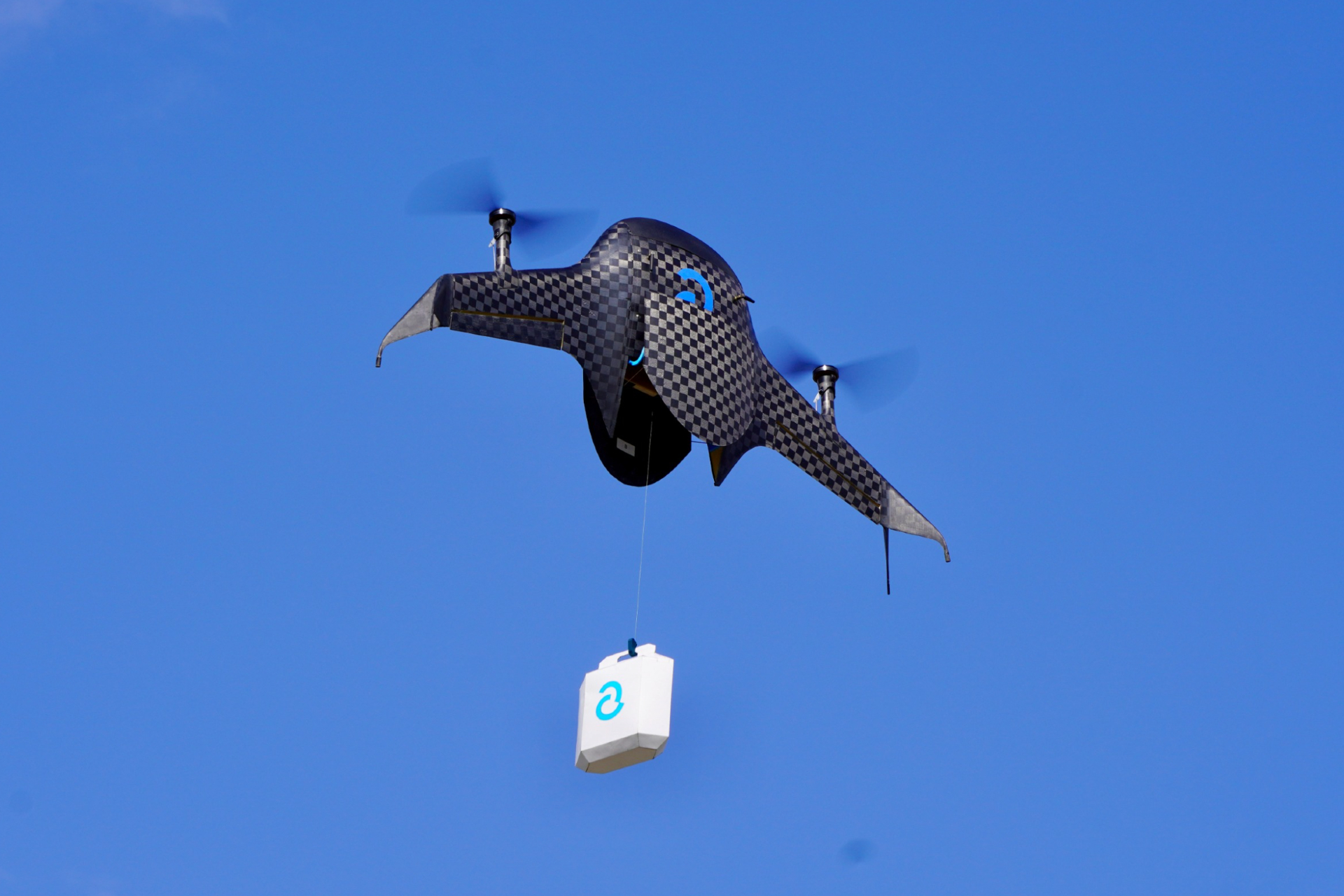
Drone startup Airbound has raised $8.65 million in seed funding to advance its ultra-light, rocket-style drones designed to make one-cent deliveries possible.
The round was led by Lachy Groom (co-founder of Physical Intelligence) with participation from Humba Ventures, existing investor Lightspeed Venture Partners, and executives from Tesla, SpaceX, and Anduril.
Founded in 2020 by Naman Pushp, who was just 15 years old at the time, Airbound is developing a blended-wing-body aircraft that takes off vertically like a rocket and flies like a plane. Its innovative tail-sitter design and carbon-fiber frame allow for extreme aerodynamic efficiency and dramatically lower energy consumption — enabling parcel delivery at up to 20x lower cost than traditional methods.
“We’re rethinking how energy is used to move goods,” said Pushp, now 20 and the company’s CEO. “Most delivery vehicles are absurdly heavy for what they carry. Our drone weighs less, flies farther, and costs a fraction as much to operate.”
Rethinking the Physics of Delivery
In India, small payloads (under 3 kg) are typically delivered by electric scooters weighing around 150 kg and costing about ₹2 (≈$0.02) per kilometer in energy. Airbound’s aircraft — dubbed the TRT — reduces that to just ₹0.10 (≈$0.001) by eliminating the driver and using a design optimized for aerodynamic efficiency.
The drone’s blended-wing-body shape uses only two propellers instead of the standard four, reducing drag and improving lift efficiency. As a result, it maintains flight with far less thrust and energy.
“There’s a huge gap between where drones are today and where they can be,” said Pushp. “Most need four kilograms of drone to lift one kilogram of payload — that’s not sustainable. We’re solving that with smarter physics.”
The current version weighs 1.5 kg (3.3 lbs) and can carry 1 kg (2.2 lbs) of payload. The next version, already in development, aims to carry 3 kg (6.6 lbs) while weighing only 1.2 kg (2.6 lbs). A prototype is expected by mid-2026, with production slated for early 2027.
Toward One-Cent Delivery
Airbound uses lithium-ion batteries instead of lithium-polymer packs, extending cycle life from 200 to up to 800 charge cycles and significantly reducing long-term operating costs. Each drone currently costs about $2,000 to produce and ₹24 ($0.27) per delivery, but the company aims to cut costs below ₹5 ($0.05) by 2026.
The startup expects to reach 1 million deliveries per day by 2027, scaling manufacturing to over 100 drones per day from its current one-per-day output at its Bengaluru facility.
Real-World Testing Begins
Airbound recently launched a pilot program with Narayana Health, one of India’s leading private hospitals. Over the next three months, the company will complete daily medical deliveries — including test samples, blood, and critical supplies — across Bengaluru.
Beyond healthcare, Airbound is targeting quick commerce, food delivery, and last-mile logistics, with plans to expand globally after reaching scale in India.
The company is also in discussions with India’s Directorate General of Civil Aviation (DGCA) to secure broader operational approval and aims to enter the U.S. market within three years.
A Teenage Vision Takes Flight
Pushp started Airbound during the COVID-19 lockdown after watching a video about Zipline, the on-demand drone delivery pioneer. His first prototype — built with toothpicks, tape, and sandpaper — won a $500 hackathon grant, followed by early backing from 1517 Fund, Grad Capital, and Emergent Ventures.
At 17, he received a term sheet from Lightspeed and signed his first funding agreement on his 18th birthday.
“When you strip logistics down to physics, it’s a game of weight and efficiency,” said Pushp. “If you’re lighter and more efficient than anyone else, you win.”
The Road Ahead
Airbound now employs 50 people and has raised over $10 million in total funding. The new capital will be used to scale production, optimize design, and lower per-delivery costs as it prepares for large-scale rollout in 2026.
“We’re not just building drones — we’re building a new logistics infrastructure,” said Pushp. “Our goal is to make near-free delivery a global reality.”


